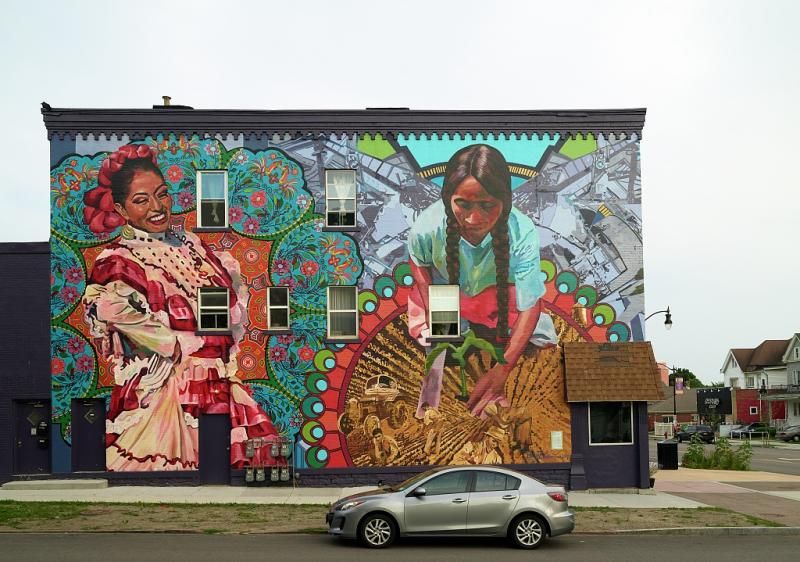Introduction

www.unsplash.com Ioana Cristiana
Public art and sculptures enhances greater sense of identity and understandings of where we live, work, and visit - creating memorable experiences for all. It humanises the built environment, provides an intersection between past, present, and future, and can help communities thrive.
In a diverse society, all art cannot appeal to all people, nor should it be expected to do so. Art and sculptures attracts attention; that is what it is supposed to do. To some degree, every public art and sculpture project is an interactive process involving artists, architects, design professionals, community residents, civic leaders, politicians, approval agencies, funding agencies, and construction teams. The challenge of this communal process is to enhance rather than limit the artist’s involvement and enhance the aesthetics of areas where art and sculptures are installed.
Public art in neighbourhoods is evolving: what once might have been a sculpture in a square can now be a pop-up intervention, an interactive performance or even a brand campaign. It can be physical, digital, mobile, static, personal, political or commercial.
Public art plays an invaluable role in the process of community building. Not only does it establish and beautify public spaces, it expresses and supports a sense of neighbourhood history, culture and identity and helps drive economic vitality.
Task

Mural of two women in traditional dress Buffalo, New York
The Noun Project www.thenounproject.com
You are encouraged to go on a walkabout in your neighbourhood and mark all the public art you spot. If your neighbourhood has no public art or there are very limited things, widen your walkabout maybe to the neighbouring area or the main city centre. You should list all the murals, sculptures and interesting architectures that catches your eyes.
Once you have listed everything try and see if there are any gaps for new murals, street furniture and or sculptures. If there's a hashtag or a local newsletter, use it because it's a tangible way to get others interested.
Remember art is economically viable in that it enhances a city's identity and diversifies its cultural attractions. Public art enhances a city's portfolio of tourist attractions. It is simple: people go to places to see things and if there is not anything to see, people are not going to be inspired to go. Locally, public art positively impacts the amount of foot traffic for surrounding local businesses.
Art positively impacts mood. Studies consistently show that art drastically improves our mental health and overall well being. Art creates a sense of social connectivity that helps us better understand and appreciate each other. By serving as an experience that we share together, public art creates common ground in a world that's becoming increasingly divisive and isolated.
Process
In order to complete the task you can either go on a walkabout in your neighbourhood/city on your own or with a small group and start making a list of all the following things you see:
- Murals/graffitti
- Interesting artchitecture
- Sculptures
- Pop up exhbitions/festivals
What murals or other public works of art do you see in your local community? Why do you think artists create public art and murals? What impact, if any, do these pieces of art have on you or others in your community?
As a follow up you can also imagine you are submitting a grant proposal to design a mural that calls attention to and educates your community about a historical event or an injustice. Write a short proposal in which you explain the design of your mural and include a description of its significant historical figures, people or groups, landmarks or other objects, and any text that you plan to include on your mural. Consider how your mural might serve as both a memorial and tool to educate community members and visitors and spark important conversations.
Conclusion
As we have seen public art can take a wide range of forms, sizes, and scales - and can be temporary or permanent. Public art can include murals, sculpture, memorials, integrated architectural or landscape architectural work, community art, digital new media, and even performances and festivals! It often interprets the history of the place, its people, and perhaps addresses a social or environmental issue.
Ultimately, however, public art will be most effective when they are part of a larger, holistic, multidisciplinary approach to enlivening a city or neighbourhood. In this way, public art can contribute both to community life and to the service and vitality of public spaces.
Evaluation
Learning Objectives
- Public art allows for varied participation, including public engagement in planning, selection, creation, installation, maintenance and collective appreciation
- Participatory public art better reflects neighbourhood identity, culture and history.
- The shared experience of creation and interaction with public art builds community cohesion.
Knowledge
- Cultural understanding
- Cultural Identity
- Sense of belonging
Skills
- Develop creative ideas and solutions
- Develop Critical thinking
Attitude
- Work in colloboration with artists, communities and planners
- You will analyse a public art and reflect on the role of public art to commemorate, educate, and build community.







